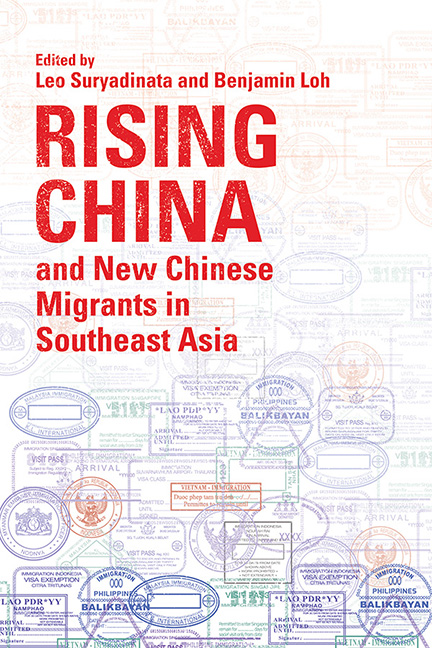Book contents
- Frontmatter
- Contents
- About the Contributors
- Introduction: Rising China and New Chinese Migrants in Southeast Asia
- Part I General Overviews on Rising China and Xin Yimin
- Part II China’s Soft Power, Xin Yimin and Local Communities
- Part III New Chinese Migrants and Local Communities
- Part IV New Chinese Migrants and Local Economies
- Index
Introduction: Rising China and New Chinese Migrants in Southeast Asia
Published online by Cambridge University Press: 09 January 2024
- Frontmatter
- Contents
- About the Contributors
- Introduction: Rising China and New Chinese Migrants in Southeast Asia
- Part I General Overviews on Rising China and Xin Yimin
- Part II China’s Soft Power, Xin Yimin and Local Communities
- Part III New Chinese Migrants and Local Communities
- Part IV New Chinese Migrants and Local Economies
- Index
Summary
Since the period of rapid development in the People’s Republic of China (PRC) after the reforms initiated by Deng Xiaoping in the late 1970s, the world is experiencing a new wave of Chinese migration. Loosely defined as Chinese people who are outside of China to conduct business, work, study or join their family overseas, these new Chinese migrants—also known as xin yimin 新移民—have had a profound impact on their host countries. Their influence on local societies, economies and politics has been complicated by Beijing’s dynamic policy towards the Chinese overseas in general and towards the xin yimin in particular.
Before we proceed further, it is important for us to put Chinese migrants in a proper historical context.
A Brief Outline of Chinese Migration
The earliest contact between China and Southeast Asia can be traced back to the Han dynasty. However, significant migration to this region started during the Song dynasty of the twelfth century. The first period was from the Song dynasty in the twelfth century until the first half of the sixteenth century of the Ming dynasty. It lasted for about 400 years. During this period, the feudal economy in China was at its peak and the number of Chinese abroad also increased. This coincided with the period that Admiral Zheng He (Cheng Ho 郑和) embarked upon his seven expeditions to the West Ocean (later known as Nanyang 南洋). Groups of Chinese merchants and sailors ventured overseas and some of them remained in various sites from their voyages. Those who stayed long married local women; the number of the Chinese overseas in Southeast Asia during this period was between 150,000 and 200,000.
The second period started in the second half of the sixteenth century when there was a sea embargo for the ethnic Chinese until the eruption of the Opium Wars. This period lasted about 300 years. During this period, China experienced the rise of capitalistic elements, and the West began to colonize Southeast Asia. More Chinese left China for Southeast Asia. According to one study, there were about a million Chinese in Southeast Asia.
- Type
- Chapter
- Information
- Publisher: ISEAS–Yusof Ishak InstitutePrint publication year: 2022

